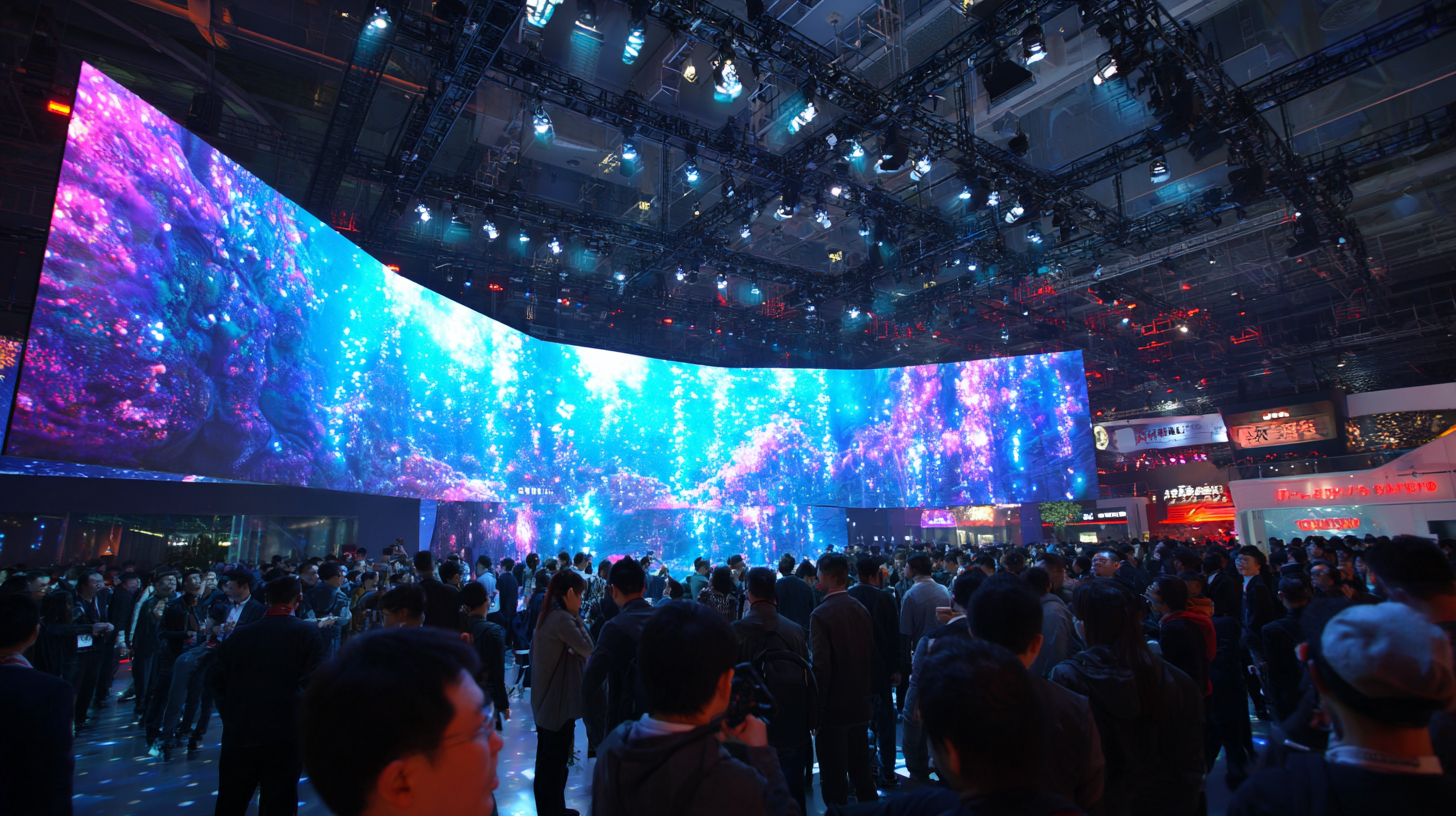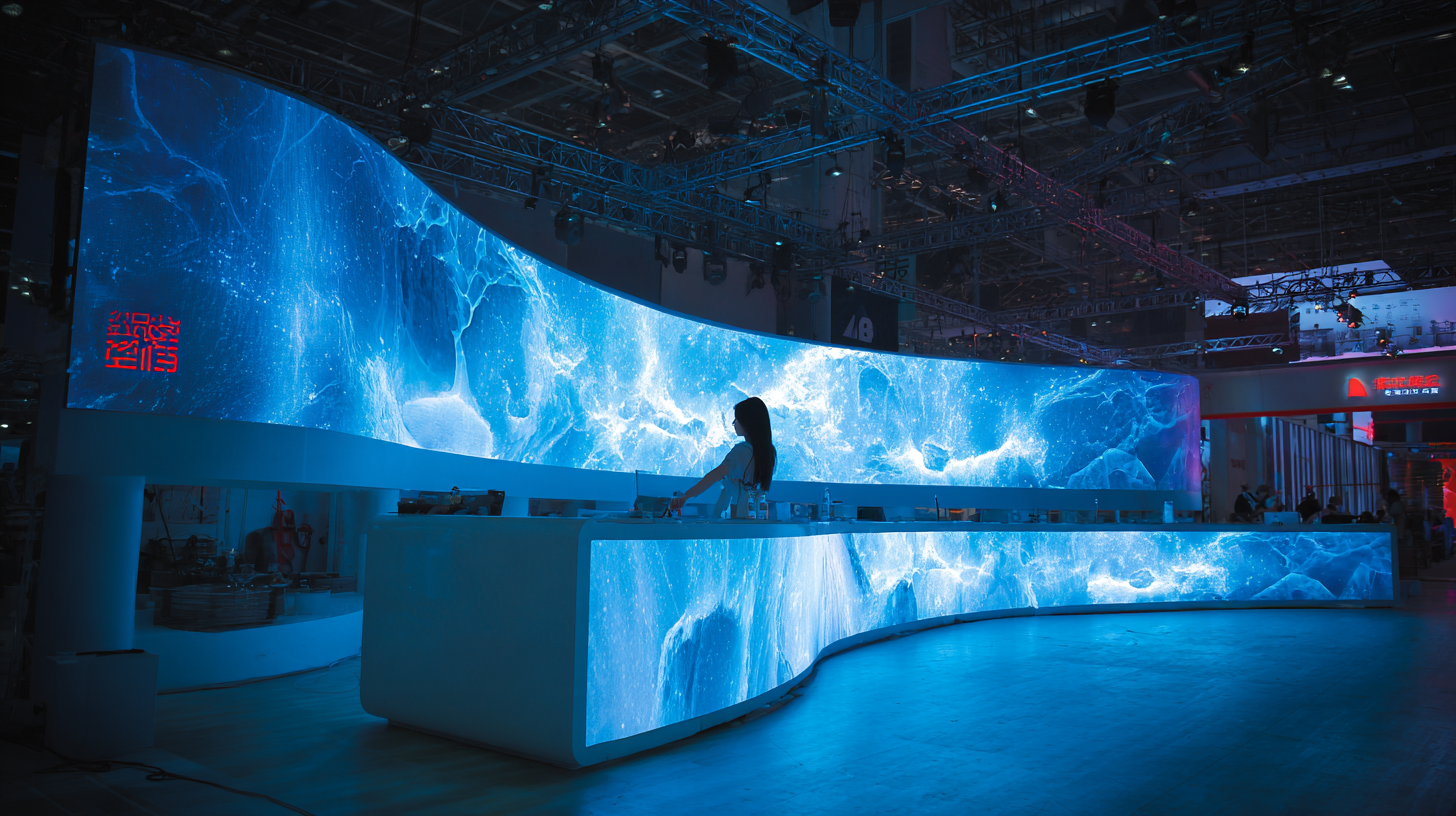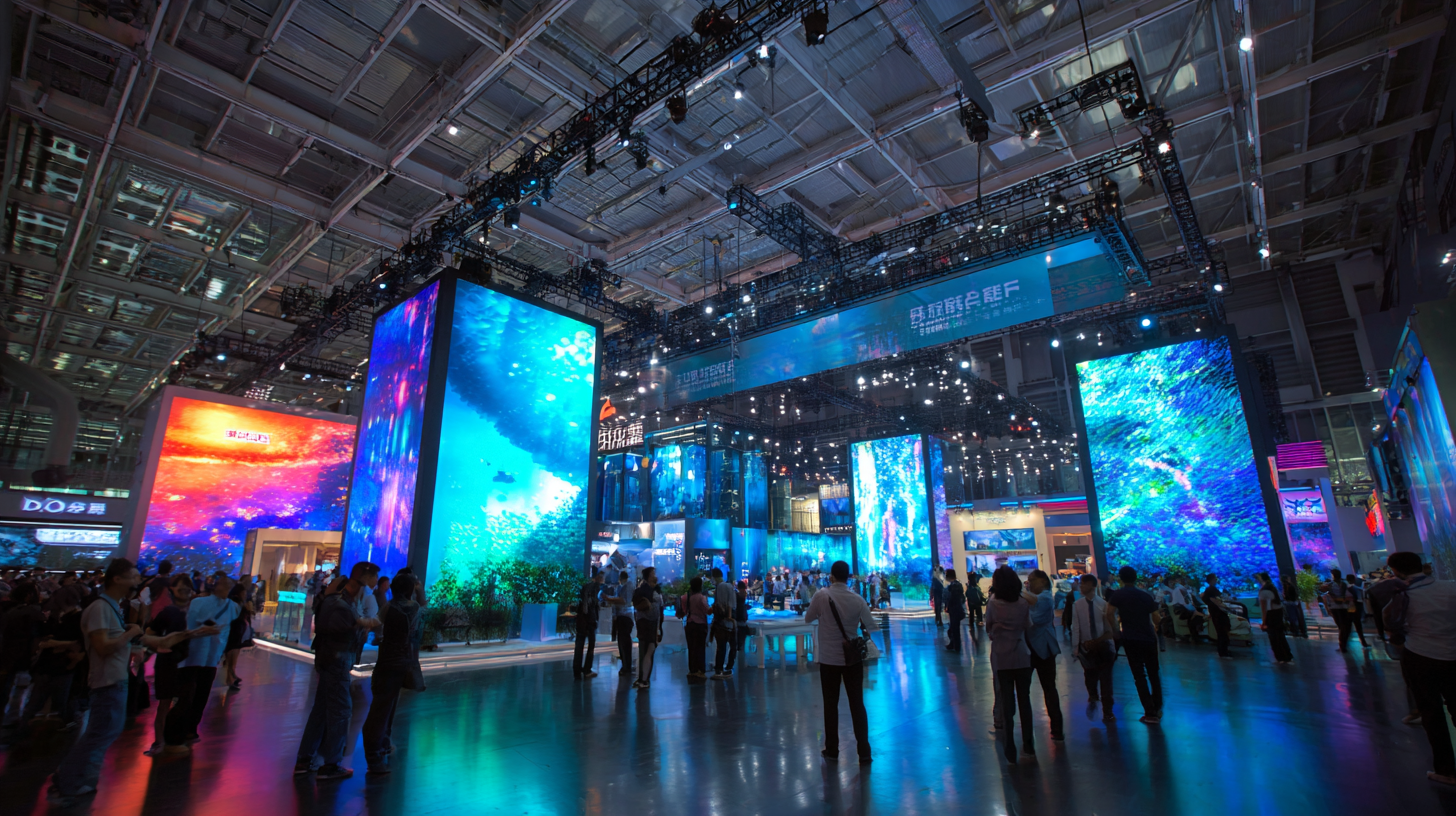
-
Home
-
Products
-
About Us
-
Case
-
News
-
BLOG
-
FAQ
-
Contact Us
Leave Your Message

As the world increasingly embraces digital innovation, China's commitment to advancing its manufacturing capabilities is reshaping global industries, particularly through the burgeoning sector of Flexible LED Film Screens. Market research indicates that the global flexible display market is anticipated to reach USD 24.4 billion by 2025, with a compound annual growth rate (CAGR) of 25.1% from 2020 to 2025. This remarkable growth is a testament to the rising demand for high-quality, lightweight, and ultra-thin display solutions across various applications including advertising, architecture, and entertainment.
 China's smart manufacturing revolution not only enhances production efficiency but also positions the nation as a dominant player in delivering premium flexible LED film screens that cater to an international market. As we delve into this transformative journey, we will explore how China's advancements in technology and manufacturing practices are setting new standards for quality and innovation on a global scale.
China's smart manufacturing revolution not only enhances production efficiency but also positions the nation as a dominant player in delivering premium flexible LED film screens that cater to an international market. As we delve into this transformative journey, we will explore how China's advancements in technology and manufacturing practices are setting new standards for quality and innovation on a global scale.
China's rapid advancement in smart manufacturing is revolutionizing industries across the globe. This transformation is characterized by the integration of cutting-edge technologies such as artificial intelligence, big data, and the Internet of Things (IoT), which collectively enhance productivity and efficiency. As China positions itself as a leader in these technologies, industries are experiencing a paradigm shift that not only streamlines production processes but also fosters innovation in product development.

The demand for premium flexible LED film screens is a significant testament to this shift. As businesses prioritize quality and versatility, the ability to produce high-performance display solutions efficiently is crucial. China's smart manufacturing capabilities allow for quick adaptations to market changes, meeting the needs of various sectors, from advertising to entertainment and beyond. This focus on advanced manufacturing techniques not only boosts local economies but also elevates China's status in the global market, making it a formidable contender in tech-driven industries.
The demand for premium flexible LED film screens is surging, driven by advancements in smart manufacturing technologies primarily from China. These innovative screens offer remarkable features such as ultra-thin profiles, lightweight construction, and exceptional flexibility, allowing them to be integrated into various applications, from retail displays to architectural installations. According to a recent report from MarketsandMarkets, the flexible display market is projected to reach $19.64 billion by 2025, growing at a compound annual growth rate (CAGR) of 24.9% from 2020. This rapid growth underscores the increasing popularity and versatility of flexible LED technologies.
The benefits of premium flexible LED film screens extend beyond their physical attributes. They allow for high-resolution display and vibrant color reproduction, making them ideal for immersive visual experiences. A report by Grand View Research highlights that the adoption of LED technologies in advertising is expected to grow significantly, with the market size estimated to reach $15.03 billion by 2025, fueled by the superior quality and cost-effectiveness of LED displays. Additionally, their energy efficiency offers a sustainable advantage, with flexible LEDs consuming up to 40% less power compared to traditional lighting options, further enhancing their appeal in the eco-conscious market.

The demand for LED display technologies is experiencing a significant surge as global market trends indicate remarkable growth potential. According to TrendForce's latest report, the LED market value is expected to reach USD 13.003 billion by 2025, driven by innovations in smart manufacturing and the increasing popularity of premium flexible LED film screens. Outdoor LED displays, in particular, are projected to expand, with market size jumping from USD 7,926.9 million in 2021 to an anticipated USD 15,863.5 million by 2030. This growth reflects a robust appetite for high-quality display solutions across various sectors.
With such rapid advancements, it's crucial for businesses to stay updated on emerging technologies. Tip: Businesses considering LED technology investments should focus on flexible screen applications to meet diverse consumer needs effectively. Additionally, as the market for display driver ICs (DDICs) continues to evolve, manufacturers should prepare for stable demand in LCD DDICs, while also exploring the rising trends in AMOLED display technologies for smartphones and IT applications.
Tip: Companies should regularly monitor market reports and industry analysis to align their strategies with current trends and consumer preferences, ultimately leading to optimized production and enhanced profitability. The potential in the agriculture display market, projected to reach USD 7.23 billion, signifies another avenue where LED technologies can play a transformative role in cultivating efficiency and sustainability.
The advent of smart manufacturing in China is leading a transformation in the production of premium flexible LED film screens. Innovations in technology, such as the integration of IoT devices and AI-driven analytics, are enhancing operational efficiency and optimizing supply chains. According to a report by MarketsandMarkets, the global smart manufacturing market is projected to grow from $214.68 billion in 2020 to $384.85 billion by 2026, at a CAGR of 10.4%. This surge illustrates how technology not only boosts productivity but also enables manufacturers to meet the increasing global demand for high-quality display solutions.
As businesses adopt smart manufacturing practices, they are utilizing advanced robotics and automation in their production lines. This not only reduces labor costs but also minimizes human error, enhancing product quality. A recent study by McKinsey revealed that automation can increase productivity by up to 30%, positioning companies to compete effectively in the global market.
**Tips:** To stay ahead in this revolution, manufacturers should invest in training their workforce on new technologies and embrace digital tools that enhance visibility and control over their production processes. Additionally, focusing on sustainability through smart manufacturing can not only attract eco-conscious consumers but also optimize resource use, significantly reducing production costs.
This chart illustrates the projected demand for premium flexible LED film screens from 2023 to 2028, showcasing the growth trajectory driven by technological advancements in smart manufacturing.
The rise of flexible LED film screens is transforming the landscape of smart manufacturing in China, presenting both challenges and opportunities within the global supply chain. As demand for premium display technology surges, manufacturers must navigate complexities such as sourcing high-quality materials and maintaining efficient production processes. The intricate nature of the LED screen supply chain calls for strategic partnerships and collaborations to ensure that the quality of components aligns with the expectations of end-users.
In addition to material procurement, companies face the challenge of adapting to rapid technological advancements. The innovation cycle for LED technology is short, requiring manufacturers to remain agile and responsive to market trends. This dynamic environment creates opportunities for those who can leverage cutting-edge manufacturing techniques and invest in research and development. Furthermore, as the demand for sustainable practices rises, integrating eco-friendly processes into production can set a company apart in a competitive market. Embracing these challenges can position businesses to thrive within the evolving landscape of smart manufacturing while meeting the global appetite for high-quality flexible LED screens.
| Dimension | Data Type | Value | Remarks |
|---|---|---|---|
| Market Growth Rate | Percentage | 15% | Predicted annual growth over the next 5 years |
| Key Segments | List | Retail, Entertainment, Transportation | Major sectors driving demand |
| Supply Chain Challenges | Description | Material Shortages, Price Fluctuations | Issues affecting production capabilities |
| Regional Demand | Geographic Areas | Asia, North America, Europe | Regions with high demand for LED screens |
| Emerging Technologies | Technology Type | IoT Integration, AI-enhanced Manufacturing | Technologies reshaping manufacturing processes |